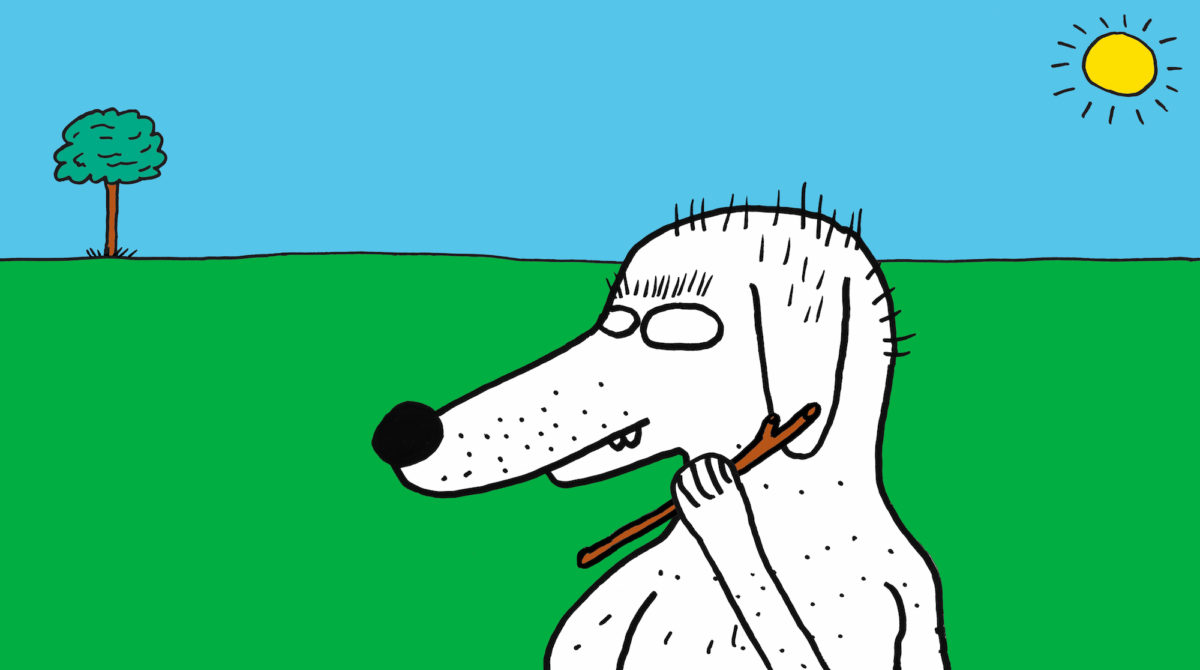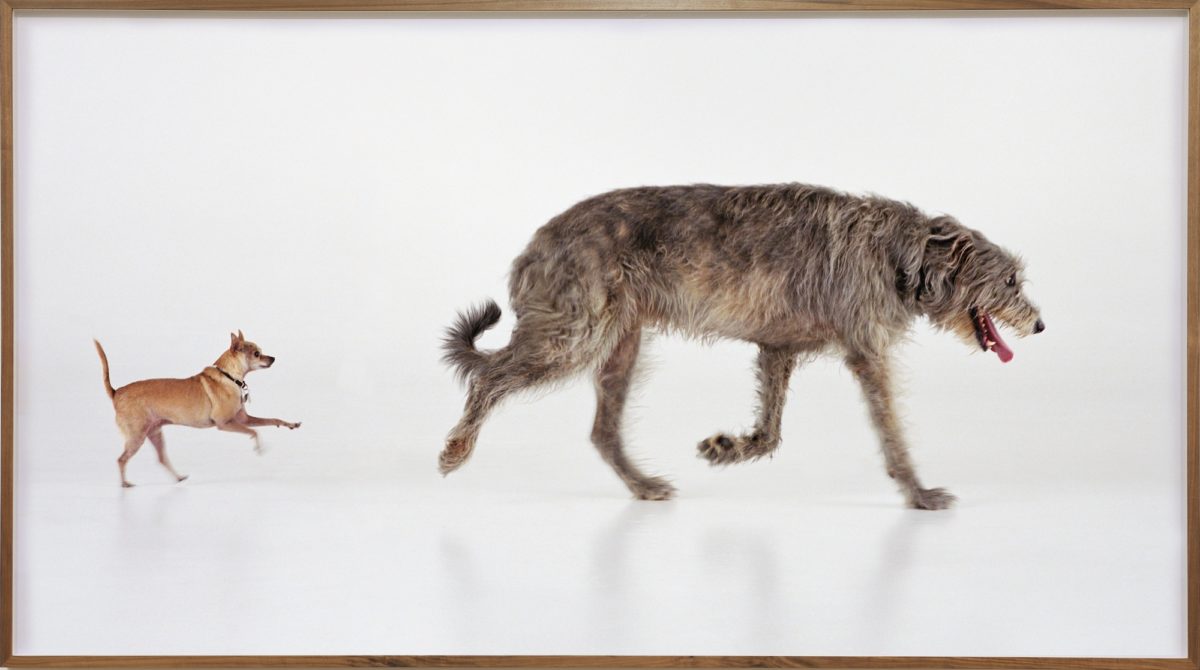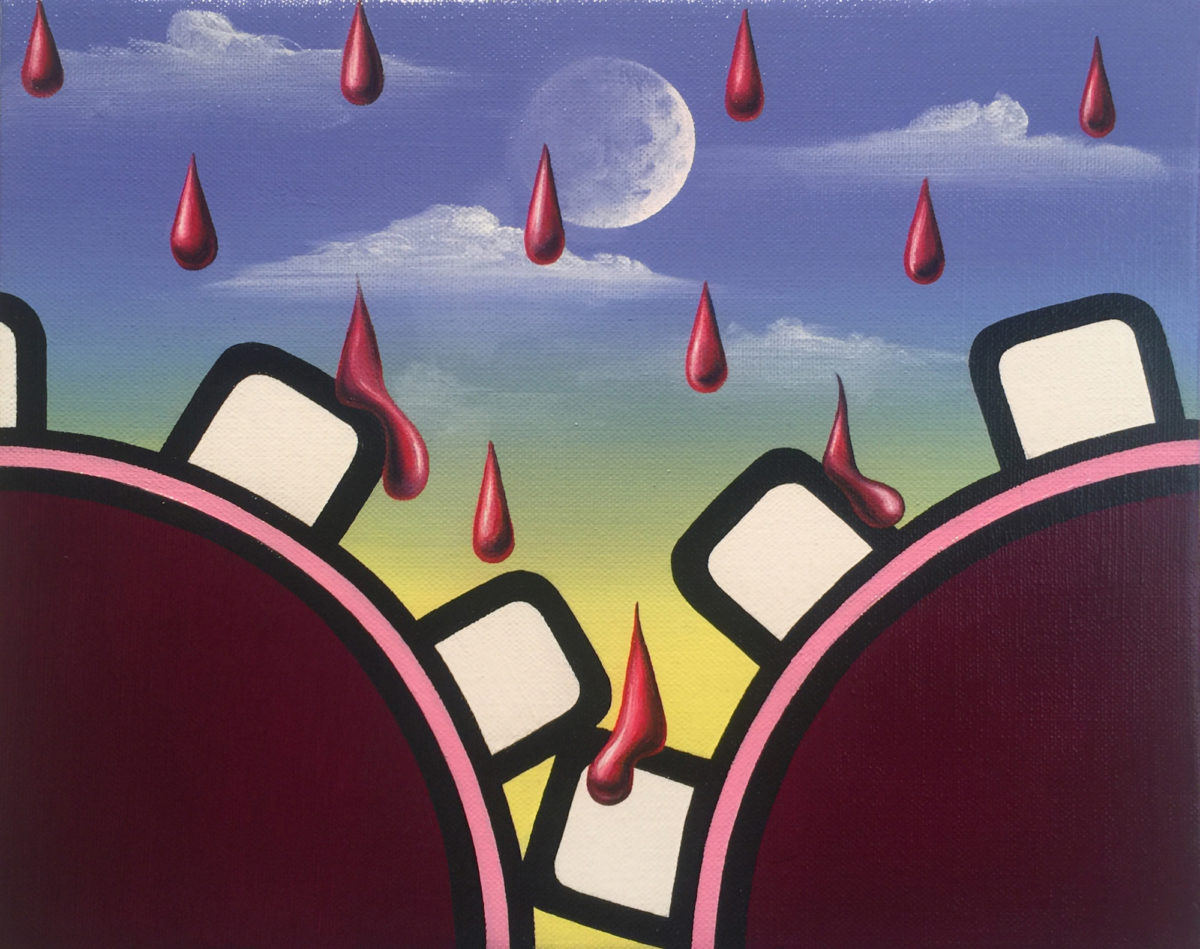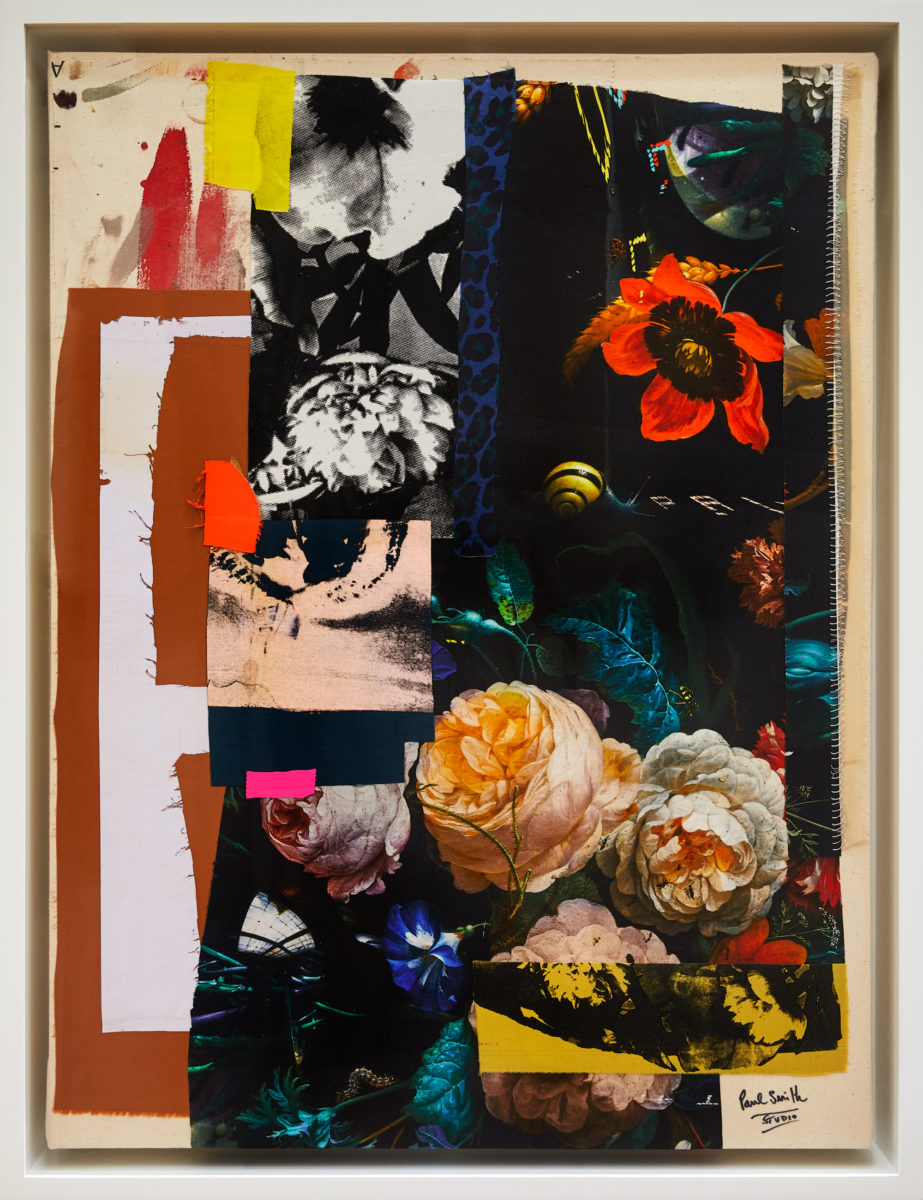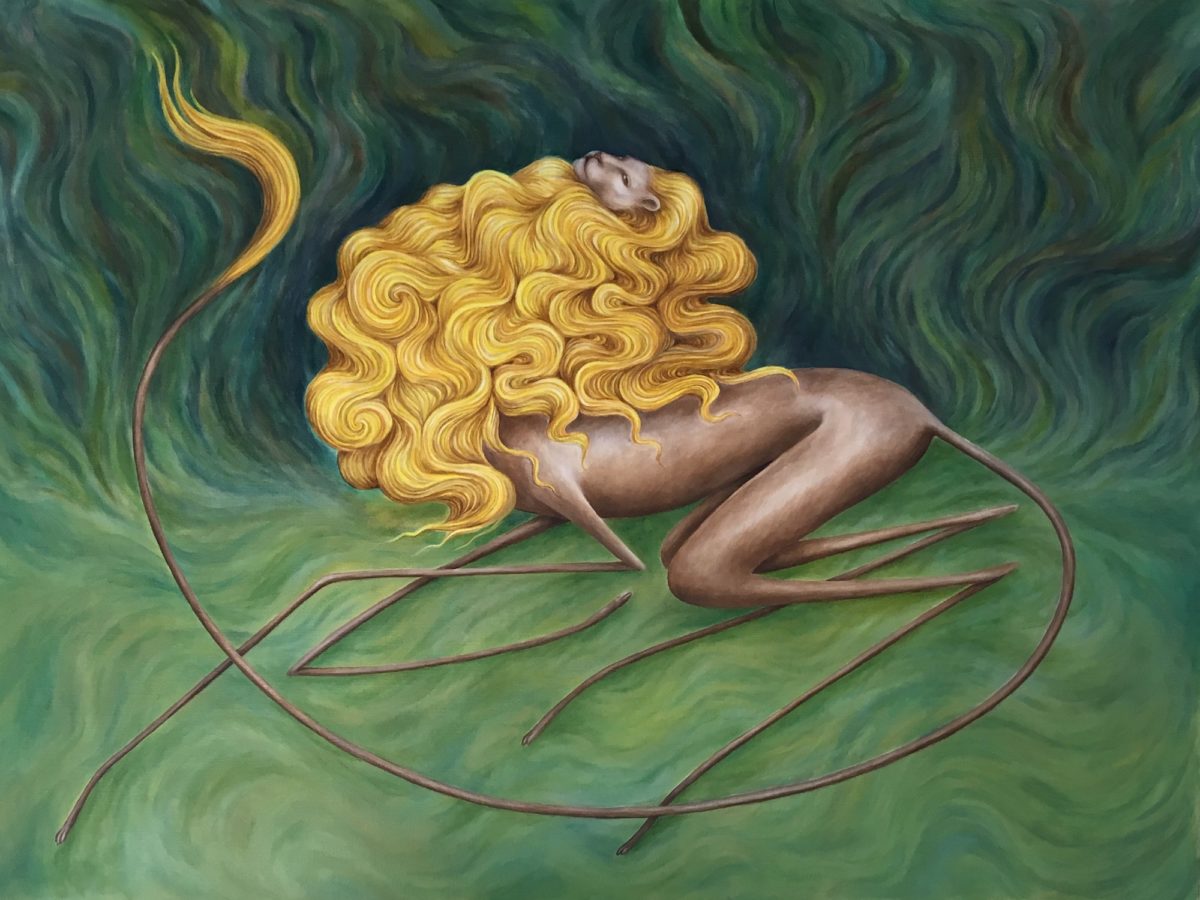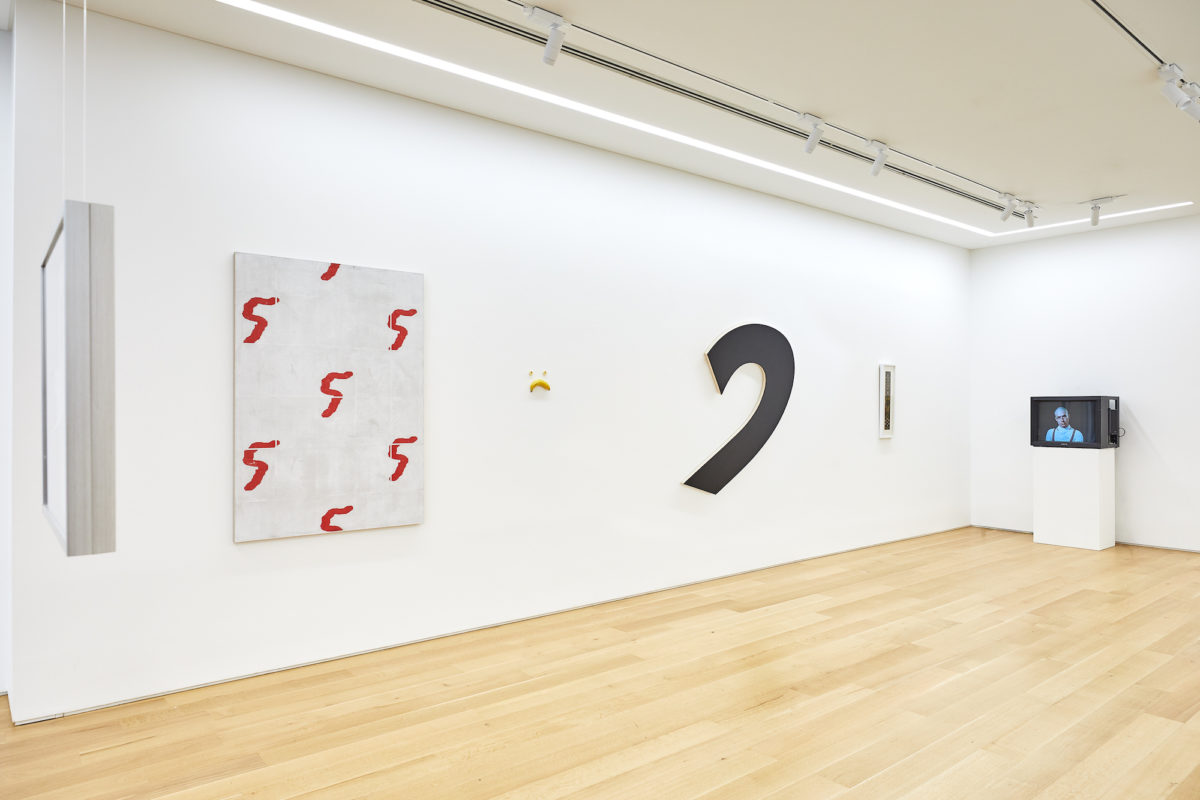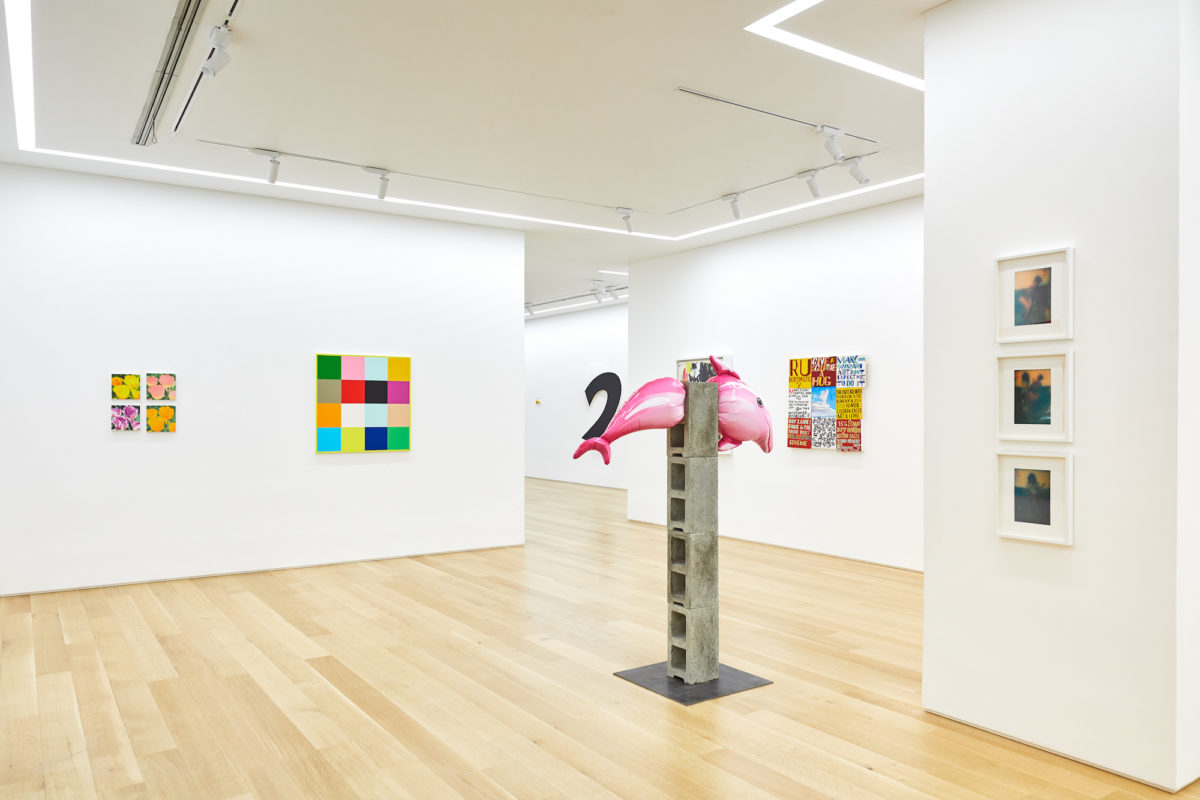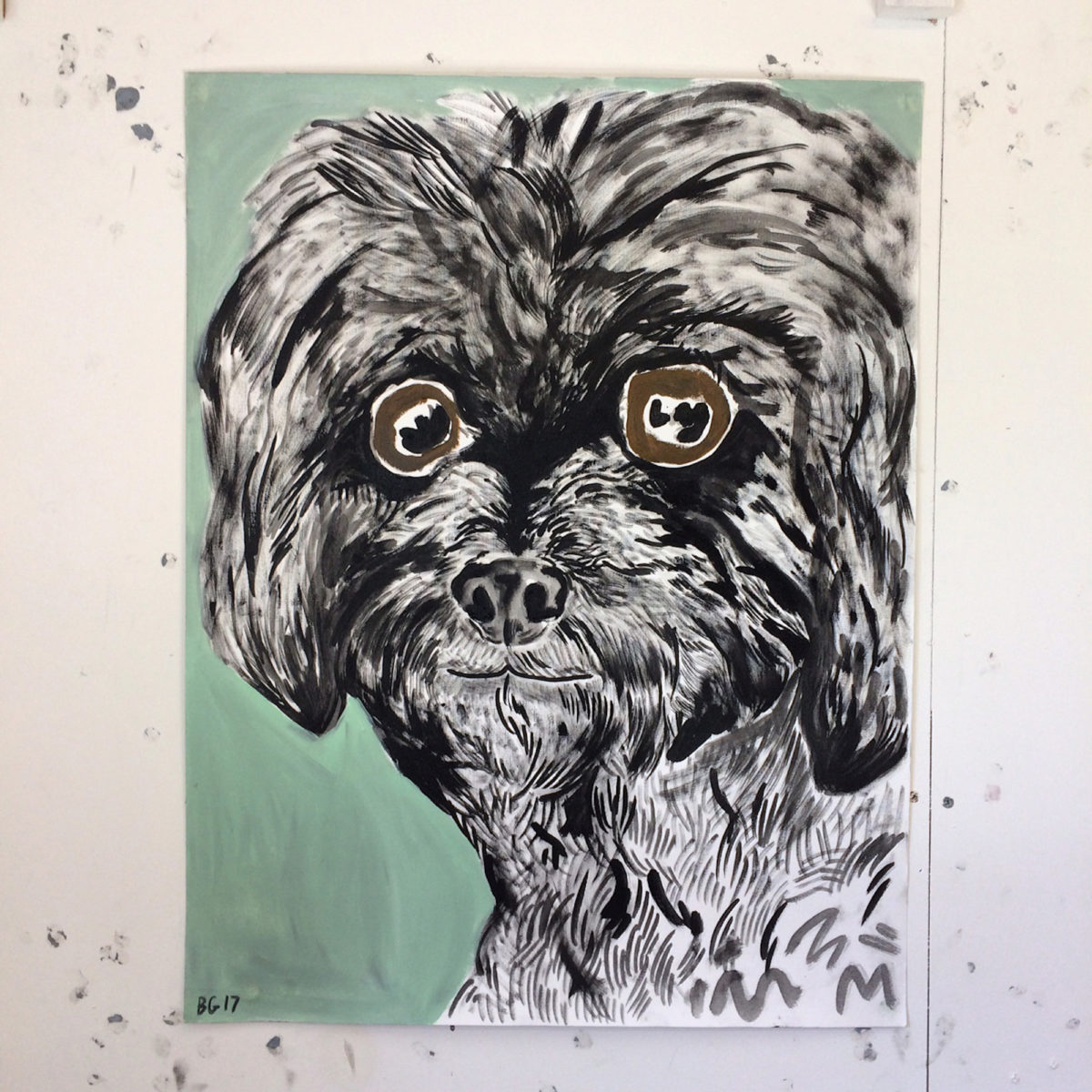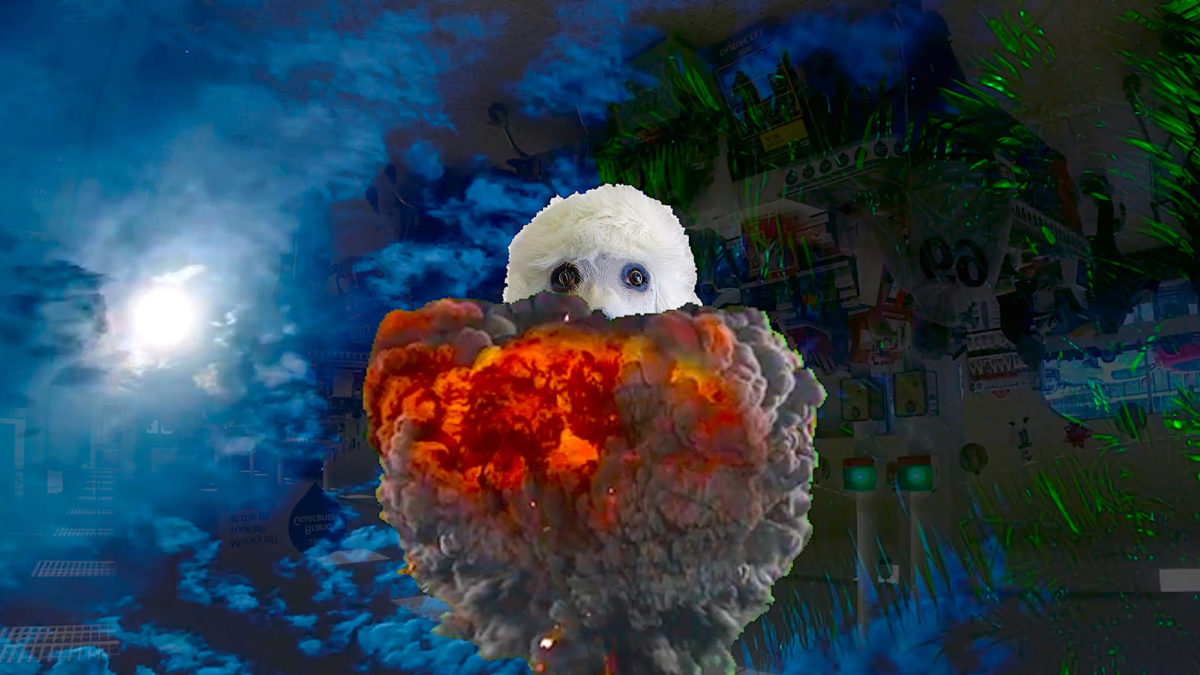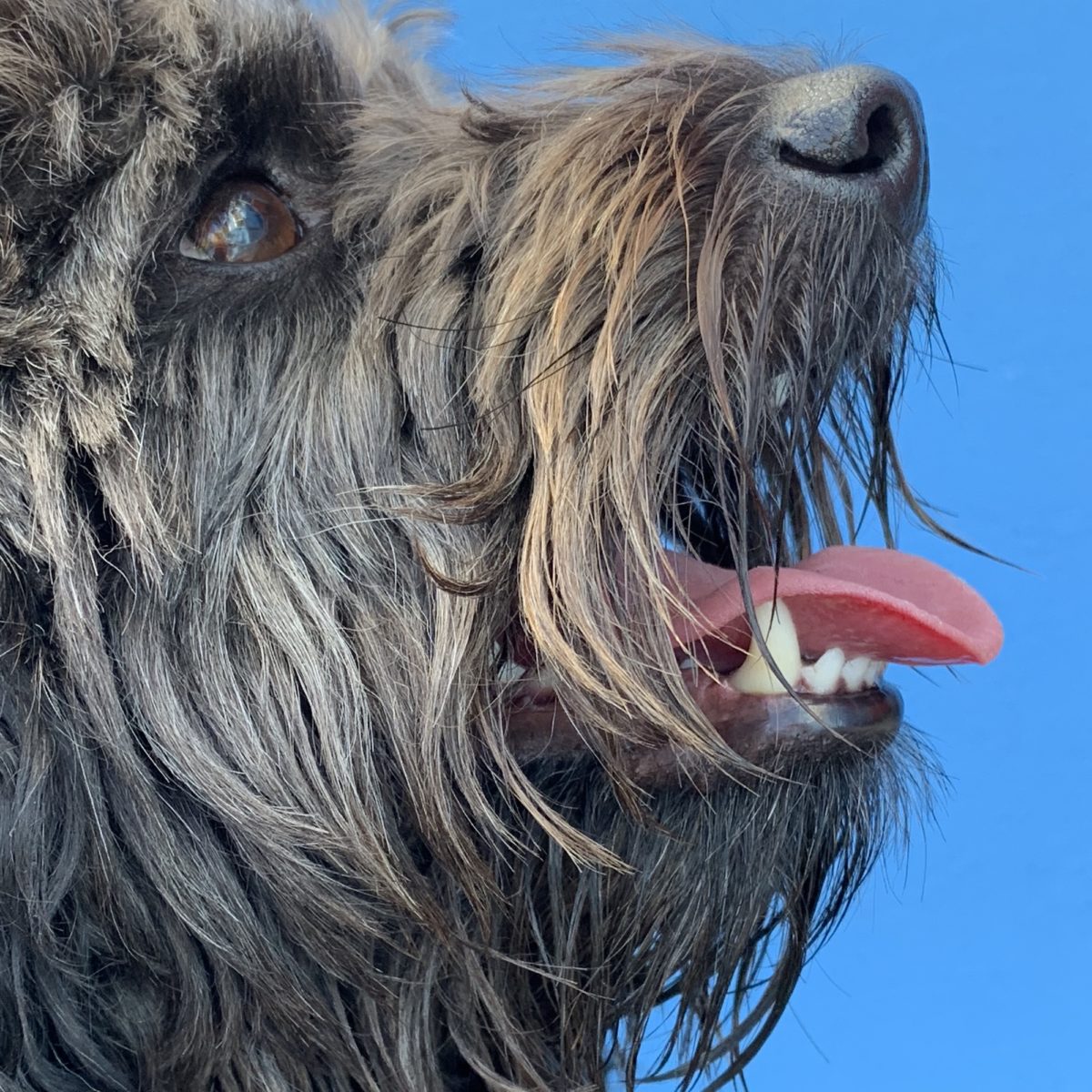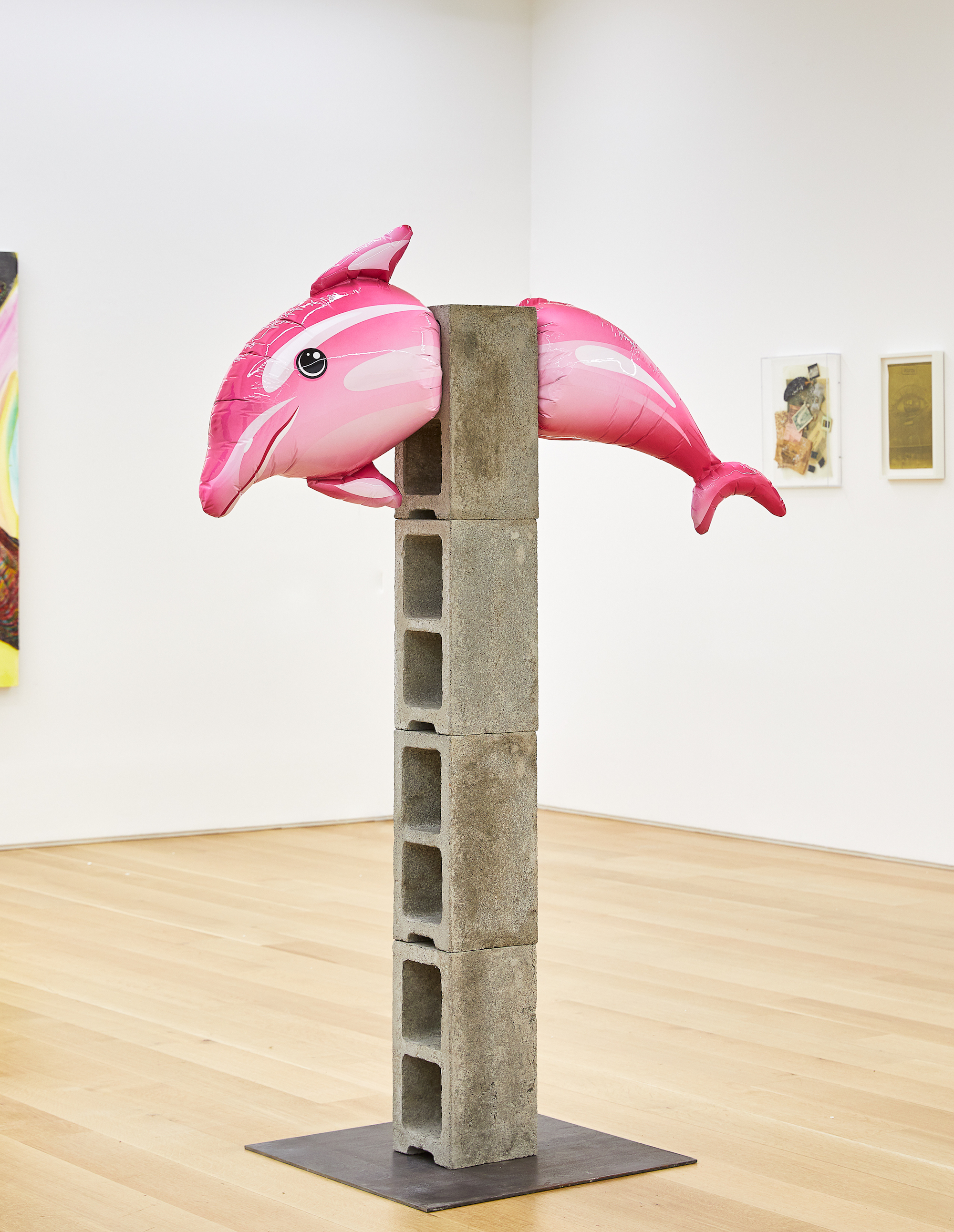
I’ve always bristled at being told what to think, though perhaps that’s the contrarian in me. Should we not look to art and exhibitions to understand our place in the world a little less? Generally mistrustful as I am of the know-it-all exhibition—brimming with confidence in its own authority—I still vividly recall my encounter with Liverpool Biennial’s 2014 edition, which refreshingly placed doubt, digression and even irreverence at its heart.
Curating can take itself awfully seriously sometimes, but, like the Liverpool Biennial exhibition back then, two current London shows slyly deflate that curatorial ego-balloon a little. Dog Show, at Southwark Park Galleries, and The Smiths at Marlborough both employ deliberately rudimentary methods for selecting artwork. Predictably enough, dogs call the shots in Dog Show—canine companions of artists and curators choose dog-themed work by other artists. And what unites the artists in The Smiths? They share a last name. Hey, it’s summer—lighten up.
- Video still. Courtesy Stephen Friedman Gallery © the artist
Both exhibitions however, with their irreverently simplistic conceits, tap into something deeper, beyond the “my-dog-could’ve-done-that” one-liner. Though as a curator myself, I do enjoy the healthy rejoinder to the practice of curating itself.
Dog Show, on the surface, is indeed an expansive exhibition of and about dogs: a canine parody of the still life genre. Joan Jonas dog drawings—chosen by Agnes the Bedlington Whippet and owner Joyce Cronin—rub alongside works by William Wegman, chosen by Samson the Cockapoo (with a little help from owner and art critic Louisa Buck). If this all sounds frothy, it’s because it is. But that frothiness—no intellectualizing here—leaves space for something more idiosyncratic and personal.
“Both exhibitions however, with their irreverently simplistic conceits, tap into something deeper, beyond the ‘my-dog-could’ve-done-that’ one-liner”
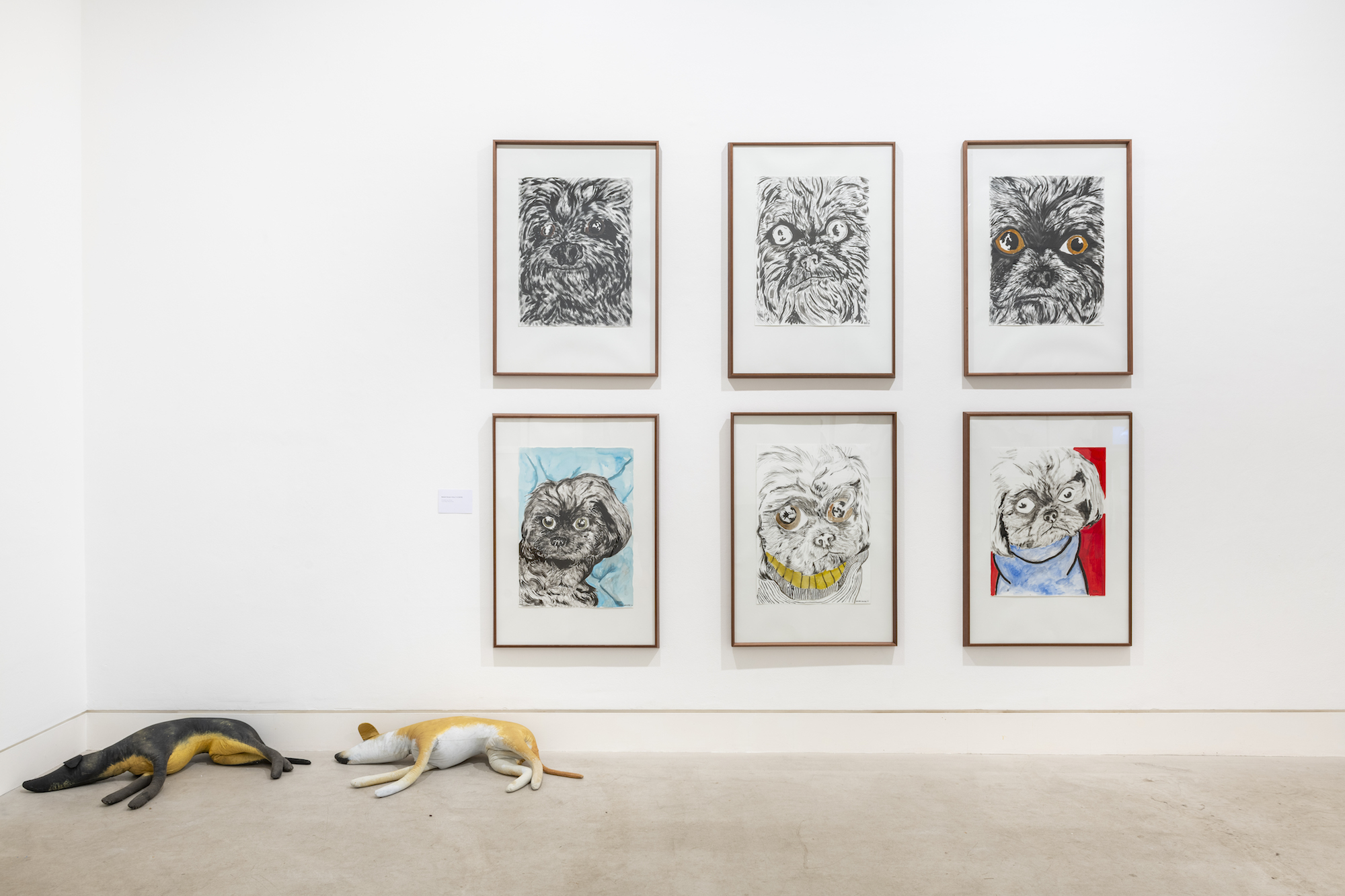
Take the sheer force of affection we place on our canine friends and compound it through the lens of art, and it becomes an unexpectedly emotionally-charged exhibition, full of touching imagery of companionship. Nothing breaks the ice with a stranger like a dog, and (just like dog owners at the park finding common ground with one another) the exhibition’s selection process reveals a nexus of friendships across the art world. This in turn—somewhat ambivalently—foregrounds how personal relationships are one of the key mechanisms of curating itself.
Over at Marlborough, what might a show of Smiths have to say about curating? The idea for the show can be traced back to the Italian conceptual artist and jokester Maurizio Cattelan, creator of the solid gold toilet sculpture titled America, which he generously offered to loan to the White House in 2017. Having received three exhibition invitations by artists with the last name Smith almost at once, the email serendipity of it sparked a thought: why not make this an exhibition itself? Famously “retired” from exhibitions after his 2011 Guggenheim solo show, it’s also a shrewd way for Cattelan to keep working without committing to realising new solo exhibitions of his own work.
The Smith conceit doesn’t restrict subject matter in quite the same way that Dog Show does. In fact—to my possibly jaded eyes—it is refreshing to encounter a range of work that has nothing to do with one another. What does the brilliant work of American artist and educator Sable Elyse Smith—whose affecting research looks into structures of constraint and the politics of incarceration—have to say to the sculptures of David Smith? I am hard pushed to find two artists with less in common, yet here they are, which rather strikes me as the point.
The press release for the exhibition somewhat grandiosely calls this “a multivalent conversation that might not ever have come into focus in a conventional exhibition setting.” Beneath the pompous language, the point is astute; “here’s a Smith, there’s a Smith” is a perversely democratic organising principle. Within the self-selecting parameter, the exhibition allows for a range of work, from artists at an emerging level to more household names, as well as a broad selection of media. For once, we are free from a certain tyranny of relatedness and can encounter the work on its own terms.
“To my possibly jaded eyes, it is refreshing to encounter a range of work that has nothing to do with one another”
 What other taxonomies? To be briefly flippant, is this so different from bringing together a range of artworks about magic, about art school, about the weather, about breakfast cereal, about Birmingham, about the neoliberal agenda, about foxhunting, about drag, about Trump? The apparent silliness of the exhibition’s selection methods in fact opens up a more complex conversation around how we categorize, also taking aim at the curator-as-expert while doing so.
What other taxonomies? To be briefly flippant, is this so different from bringing together a range of artworks about magic, about art school, about the weather, about breakfast cereal, about Birmingham, about the neoliberal agenda, about foxhunting, about drag, about Trump? The apparent silliness of the exhibition’s selection methods in fact opens up a more complex conversation around how we categorize, also taking aim at the curator-as-expert while doing so.
As much as this exhibition frees us from searching for links between artworks beyond the self-evident, why not go further? I would love to see some more antagonistic exhibitions, where difference and friction might be a curatorial proposition in place of sameness, affiliation or commonality. A more complicated question around self-identification is also not explored in The Smiths—namely, the politics by which a person, an artwork, or a subject, is included within a designated group. But then part of the point of these two exhibitions is to actively work to avoid complexity.
Both exhibitions gently chip away at the earnest tone of much contemporary exhibition making, with playing dumb as their key humoristic conceit. Like any well delivered joke, the timing of the punchline is key. Institutions and galleries programme now in the context of a year or season—that is, holistically—as opposed to exhibition by exhibition as discrete entities. Without question, both Southwark Park Galleries and Marlborough will follow up these exhibitions with something a little more serious in tone. Which is not to say Dog Show and The Smiths don’t make elegant points. Indeed, a moment of lightness is more impactful in the context of a varied exhibition programme.
“The apparent silliness of the exhibition’s selection methods in fact opens up a more complex conversation around how we categorize”

With the gasping exception of Brexit, August is generally silly-season in journalism—with Parliament in recess, the news cycle slows and stories take on a distinctly fruity tone. Dog days indeed. The art world generally takes itself exceedingly seriously, so our own version of silly season strikes me as a healthy respite and corrective. As much as I would personally enjoy it, these two exhibitions would never take place in September or October, when the commercial whirl of Frieze Art Fair is in town, and galleries and institutions put their best and most expensive foot forward.
These exhibitions ask us—for once—not to take it all so seriously. And what if the joke doesn’t land? I am reminded of a wise piece of advice handed down to me when I was starting out: “It’s just an exhibition.”
Edward Ball is a curator at Freelands Foundation in London
